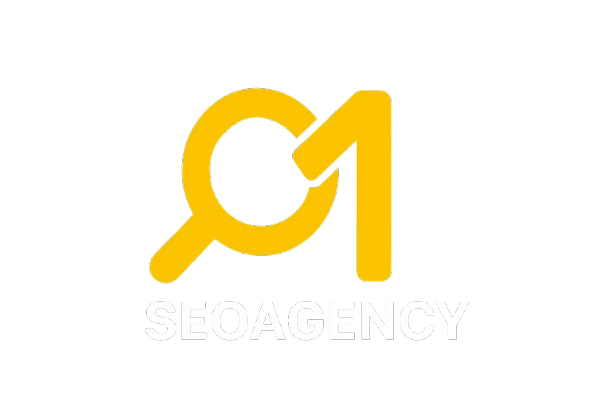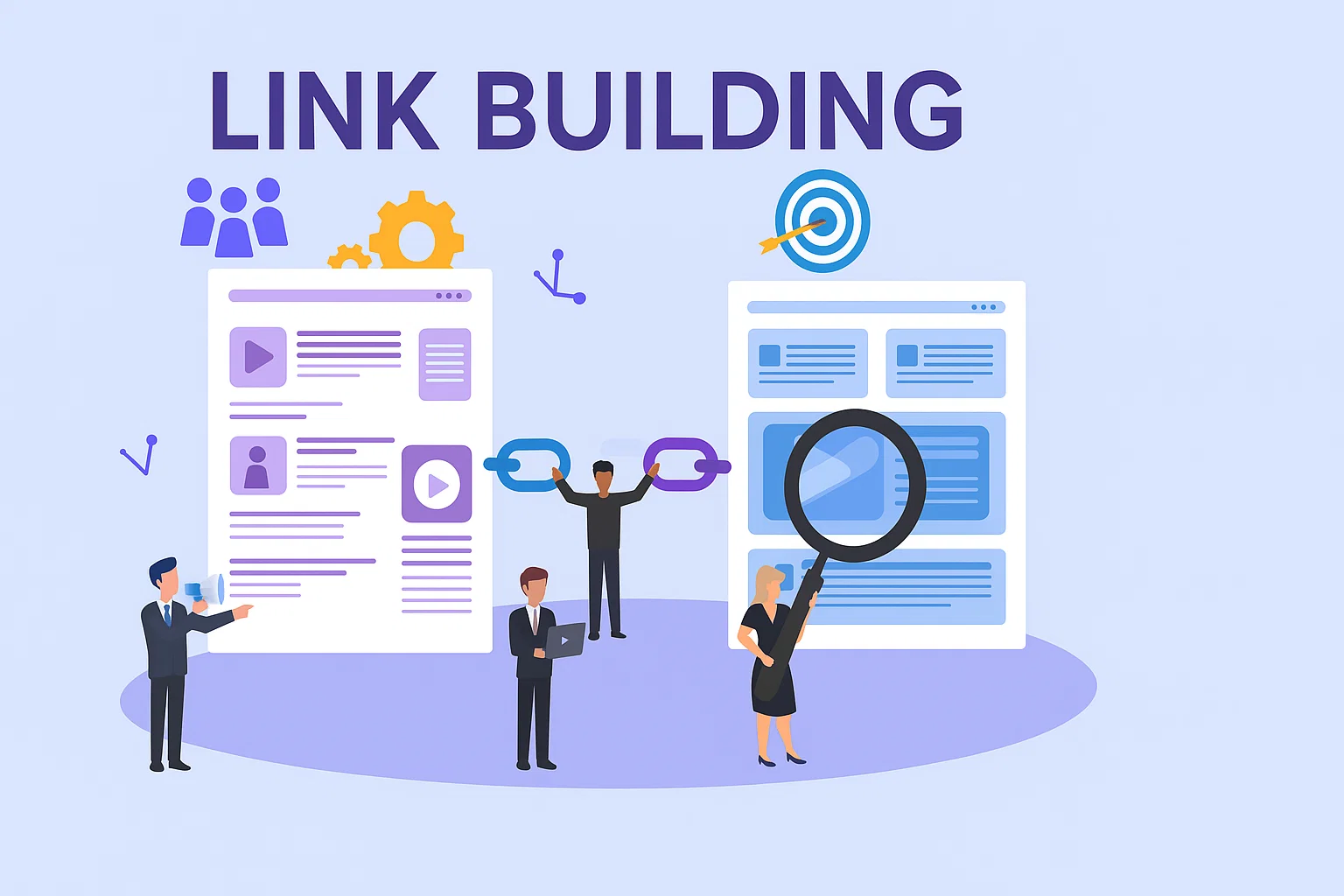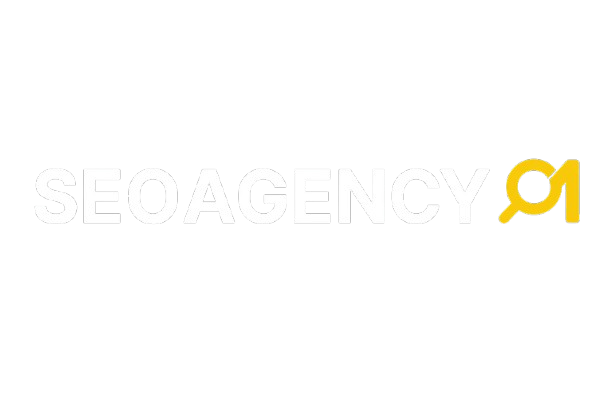introduction
Internal Nofollow Links: Have you ever poured your heart into creating the perfect property listing or a helpful local market guide, only to watch it get lost on the second page of Google? You are not alone.
Countless real estate websites across the USA face this same struggle. The competition is tough, and even the smallest SEO detail can make a big difference.
Many agents and brokers focus on big strategies but overlook a simple, powerful tool already on their own site: the internal nofollow link.
This is a small piece of code (rel="nofollow") added to a hyperlink that tells search engines like Google not to pass on ranking authority, or “link equity,” to the page it points to.
While that might sound counterintuitive, this tiny tag is a secret weapon for smart website management. It gives you precise control over how your site’s internal authority flows.
By strategically using nofollow attributes on internal links, you can guide search engine crawlers to your most important pages like your featured listings or community pages, and away from less crucial ones, such as login portals or legal disclaimers.
Table of Contents
2. Basics of Internal Linking
An internal link is a clickable connection that takes you to another page on the same website. Think of it like a hallway inside a large building that helps visitors move from one room to another.
If you’d like to see how this works in action, check out this guide on link building strategies.
The front door is your website’s homepage. The internal links are the signs on the hallway doors that guide you to different rooms, like the kitchen (your “Services” page) or the living room (your “Blog” page). You never leave the building; you just move to a different area within it.
How Internal and External Links Work: Real Estate
It’s easy to tell the difference between these two types of hyperlinks.
- Internal Link Example: On a real estate agency’s blog post about “First-Time Home Buyer Tips,” you might see a sentence like: “Getting a mortgage pre-approval is a critical first step. Learn more about our hassle-free pre-approval process here.” The link goes to the agency’s own “Mortgage Services” page. This is an internal link.
- External Link Example: On that same blog post, you might read: “For official information on current mortgage rates, we recommend visiting the Federal Reserve website.” This link would take you away from the real estate agency’s site and to a government page. This is an external link.
How Internal Links Guide People
Internal linking is a powerful tool because it helps two very important audiences: your website visitors and Google’s algorithms.
For Search Engines: These links help search engine crawlers discover and understand all the pages on your site. They show the relationship between different pieces of content and help establish a hierarchy of information.
By linking from a new blog post to an important service page, you are essentially telling search engines that the service page is a key part of your site’s topic, which can help its ranking. This process, often called link equity flow or PageRank sculpting, is a core part of technical SEO.
For Users: A good internal linking structure acts like a helpful tour guide. It suggests other relevant pages a visitor might find useful, keeping them engaged and on your site longer.
If someone is reading about “Staging Your Home for Sale,” a link to your article on “Choosing the Right Real Estate Agent” is a natural and helpful next step. This improves the user experience.
Dofollow vs. Nofollow Explained Simply
Understanding the difference between these two types of links is key to managing your site’s SEO health.
- Dofollow Links (The Default): This is the standard type of link. When you link from Page A to Page B without a
nofollowtag, you are “voting” for Page B. You are telling search engines that you trust that page and that it is a valuable resource. - This vote, also known as “link equity” or “PageRank,” helps Page B rank better.
- Nofollow Links: Adding the
rel="nofollow"attribute to a link tells search engines to ignore it as an endorsement. It does not mean the link is bad. - It simply means you do not want to transfer your site’s ranking power to the linked page. The link is still perfectly clickable for your users.
You Use Nofollow on Internal Links?
For most internal links on your real estate website, you will want to use standard dofollow links to help your important pages (like community guides or property listings) rank well. However, there are smart reasons to use the nofollow attribute internally:
- Links in Comment Sections: If your blog allows comments where users can add links, those should be nofollow to avoid associating your site with potentially spammy content.
- Paid Advertising Links: If you have banner ads or paid partnerships linking to another site, search engines prefer you use nofollow.
- Linking to Login/Portal Pages: There’s no SEO value in having search engines crawl your client login or admin pages. Using nofollow here can help search engines focus on your important content.
A Simple Code Snippet for Beginners
You don’t need to be a expert to add a nofollow link. It’s a small change to a standard HTML link.
A normal dofollow link looks like this:<a href="https://www.yoursite.com/community-guide">View Our Community Guide</a>
To make it a nofollow link, you simply add the rel="nofollow" attribute:<a href="https://www.yoursite.com/community-guide" rel="nofollow">View Our Community Guide</a>
Proper Linking is Crucial for Real Estate SEO
- Prevent wasting valuable link authority on pages that offer no value to your SEO goals. This includes necessary but unimportant pages like your login portal, privacy policy, or terms and conditions.
- Focus search engine attention on your most important content. By using
nofollowon the right links, you channel all your site’s power toward your property listings and community guides, which are the pages you want to rank highly. - Keep potential buyers engaged on the pages that matter. Using
nofollowfor external links can also help keep users on your site instead of sending them away to a third party prematurely.
How to Structure Your Content for Maximum Impact
People read differently online. They scan content quickly, looking for answers. A clear structure helps them find what they need and signals to search engines what your page is about.
Use Clear Headings to Guide Readers
Break your text into sections using descriptive H2 and H3 headings. Think about what your audience is searching for and use those phrases naturally.
For example, instead of a vague heading like “Buying a House,” try a more specific long-tail keyword:
- H2: How to Buy Your First Home in a Competitive Market
- H3: Essential Steps for Getting a Mortgage Pre-Approval
- H3: What to Look for During Your First Home Tour
These headings are more helpful to readers and are more likely to match exactly what people type into Google.
Make Your Content Easy to Scan
Bullet points and numbered lists are perfect for listing features, steps, or tips. They allow visitors to digest information quickly.
Structure Your Real Estate Website
A clear website structure helps both search engines and potential clients find what they need. Organizing your content logically improves the user experience, which is a key factor in search rankings.
Think of your website as a virtual open house; you want everyone to be able to navigate it easily.
- Use clear menus labeled “Buy,” “Sell,” “Neighborhoods,” and “About Us.”
- Create dedicated pages for each community you serve.
- Ensure your contact information is easy to find on every page.
How to Highlight Important Information for Your Readers
When you have a key statistic, a crucial piece of advice, or a quote from an expert, you should make it stand out.
- Actionable Tip: Always get a pre-approval letter before you start house hunting. This shows sellers you are a serious buyer.
- Statistic: According to industry data, homes with professional photography sell faster than those without.
- Expert Quote: > “Pricing your home correctly from the start is critical. Overpricing can lead to it sitting on the market, which can deter potential buyers later on.” – Jane Doe, Local Real Estate Expert.
Buy a Home for First-Time Buyers
The home buying journey can feel overwhelming. Breaking it down into simple steps makes it less intimidating.
This guide will walk you through the key stages, from getting your finances in order to receiving the keys.
- Check your credit score and get pre-approved for a mortgage.
- Define your must-haves versus your nice-to-haves in a property.
- Work with a local real estate agent who knows the market.
Pros and Cons of Selling Your House Yourself
Choosing the right method to sell your home is a major decision. Many homeowners consider the For Sale By Owner (FSBO) route to save on commission fees.
It’s important to weigh the advantages and challenges before you begin.
| Pros of FSBO | Cons of FSBO |
|---|---|
| You avoid paying a listing agent commission. | You handle all marketing, photos, and listing setup. |
| You have full control over the process. | You must be available for all showings and inquiries. |
| You negotiate directly with the buyer. |
Important Tips for Home Buyers and Sellers
The real estate market is always changing. Staying informed with accurate data and professional advice is the best way to achieve your goals. As one industry expert often says, “Your home is your biggest investment; treat the process with the respect it deserves.”
A key statistic to remember is that homes listed with a professional agent typically sell for more money than those sold by owners.
Use Nofollow Links on a Real Estate Site
It’s good practice to apply nofollow to links on utility pages that aren’t meant for the public. This includes links on your login, register, and admin dashboard pages.
You should also use it on pages with thin or duplicated content, such as duplicate search results or print-friendly views of listings.
Improving Site Health with Strategic Nofollow Tags
A real estate brokerage noticed their website was taking a long time to load, and some lower-quality pages were being indexed by search engines.
They implemented nofollow tags on all their internal filter and sort pages for property searches.
Comparing Different Types of Mortgages
Choosing a home loan is a major decision. A simple comparison can be very useful for your clients. Here is a brief overview of two common options.
| Loan Type | Key Benefits | Things to Consider |
|---|---|---|
| Fixed-Rate Mortgage | Your monthly payment stays the same for the entire loan term. This makes budgeting easy and predictable. | Often starts with a higher interest rate than an adjustable-rate loan. |
| Adjustable-Rate Mortgage (ARM) | Typically offers a lower initial interest rate, which can mean lower payments for the first few years. | The rate can change over time, which may lead to higher payments later. |
Expert tip: Always get pre-approved for a mortgage before you start seriously looking at homes. This shows sellers you are a serious and qualified buyer.
Improving Site with Correct Nofollow Tags
A real estate agency noticed its website was slowing down because search engines were spending time crawling thousands of filtered search result pages.
These pages offered little unique value and were diluting the site’s overall focus.
By applying nofollow tags to the links generating these filters, they instructed search bots to ignore those low-value paths.
The result? Crawl efficiency improved by over 30%, allowing search engines to spend more time indexing their core listing and community pages.
Crawl Budget: Why It Matters
Crawl budget is the number of pages a search engine bot will crawl on your site within a given time. If your site is poorly organized, these bots might waste time on unimportant pages like old filters or admin panels.
This means your new, high-value property listings might not get discovered and indexed quickly. For a real estate portal, ensuring bots can efficiently find your latest content is crucial for visibility.
Guide to PageRank Sculpting
PageRank sculpting is the practice of strategically directing that flow to your most important pages. By using internal links wisely, you can guide both users and search engines toward your key destinations.
For a real estate site, this means directing more internal “link juice” to your featured luxury listings or high-demand community pages rather than spreading it thinly across every page.
Understanding the Role of Anchor Text in Linking
Anchor text is the clickable words in a hyperlink. It acts as a powerful signal to search engines, telling them what the linked page is about. Using clear, descriptive anchor text is a core best practice.
For example, linking with the text “downtown Miami condos for sale” is far more helpful than a generic “click here.” It provides context for both users and search engine algorithms.
However, it’s vital to keep your anchor text natural and varied. Over-optimizing with the same exact keyword phrase can appear manipulative. A natural mix of branded, generic, and keyword-rich anchor text creates a healthy, user-friendly linking profile.
Common Technical SEO Mistakes to seo
Many well-intentioned agents harm their site’s search performance with simple oversights.
- Accidentally nofollowing property listings. This tells search engines not to pass any authority to these pages, making them much harder to find.
- Blocking neighborhood and market report pages. These pages are goldmines for local SEO. Ensure search engines can crawl and index them.
- Forgetting to test with Google Search Console. This free tool is vital for identifying indexing errors, tracking performance, and understanding what queries bring users to your site. Check it regularly.
Conduct an Internal Link Audit
An internal link audit is like creating a better floor plan for your website. It helps search engines and potential buyers navigate your content easily.

A well-structured site keeps visitors engaged longer, which is a positive signal to Google.
Start by mapping your internal links. This shows you how your most important pages, like community guides or featured listings, are connected to the rest of your site.
Essential Tools for Your Internal Link Analysis
You don’t have to do this manually. Several powerful tools can crawl your website just like a search engine bot, giving you a clear picture of your internal linking structure.
- Screaming Frog SEO Spider: This is a fantastic desktop tool for a deep, detailed crawl of your entire site. It’s excellent for technically-minded users.
- Ahrefs Site Audit: Part of the broader Ahrefs toolkit, this feature is great for spotting a wide range of SEO issues, including internal linking problems.
- Google Search Console: This free tool from Google is essential. The “Links” report shows your site’s most linked-to pages, giving you a top-level view of your internal link structure.
Using these internal linking tools saves you time and provides data that is impossible to gather by hand.
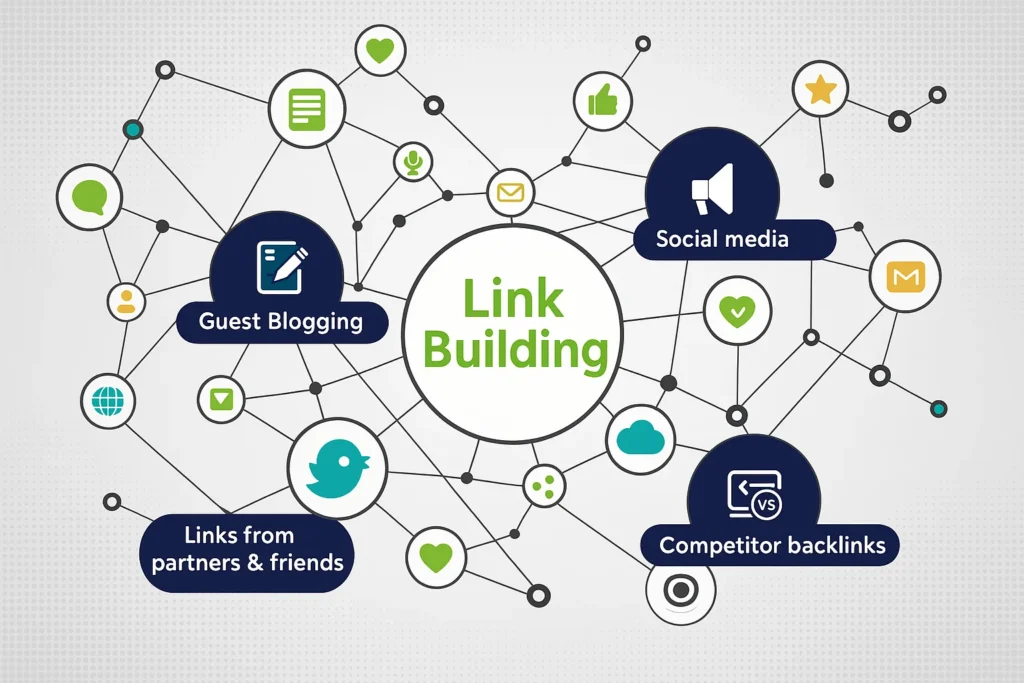
Fixing Broken Internal Links Quickly
Nothing hurts user experience more than clicking a link and seeing a “404 Page Not Found” error.
For a real estate website, this could be a link to an old listing that has sold or a community page that was removed.
Broken links frustrate users and waste “crawl budget,” meaning search engines spend time on error pages instead of your valuable content.
Make it a habit to run a broken link check every month. Most audit tools will generate a list of these broken links for you. Once you have the list, you have two simple fixes:
- Update the link to point to a relevant, active page (like a new listing in the same area).
- If no suitable page exists, remove the link entirely.
Fixing these issues promptly makes your site more professional and trustworthy.
Missed Internal Link Opportunities
You can also find older blog posts that are still relevant but have been forgotten. A best practice is to link from new content to your older, high-performing pages.
This strategy keeps your entire site fresh and interconnected. The Ahrefs internal links report can help you see which pages have the most links pointing to them, so you can identify your site’s power pages.
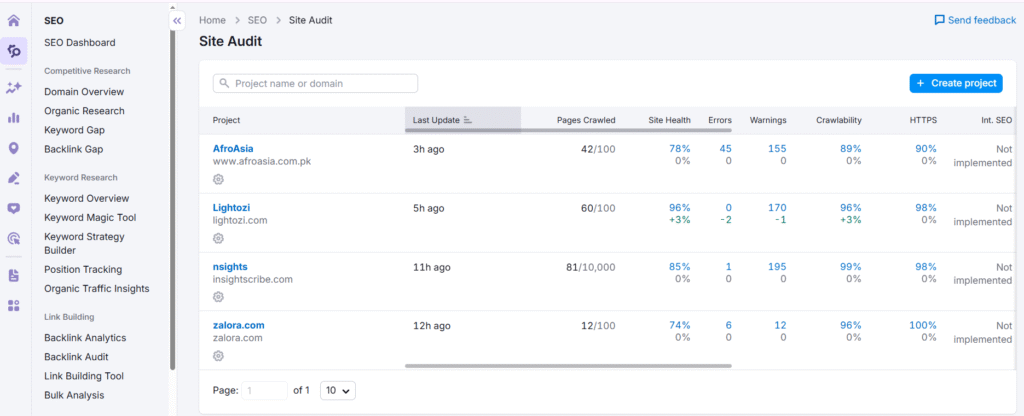
faqs:
Are nofollow links beneficial for SEO?
Yes, nofollow links can be valuable. They contribute to a natural and diverse backlink profile. While they don’t directly pass ranking authority, they can generate genuine traffic and brand awareness.
How do internal links influence search engine optimization?
Internal links are crucial for SEO. They help search engine crawlers discover and index pages on your site more effectively.
This linking structure also distributes page authority throughout your website, helping important pages rank higher.
What is the purpose of the nofollow tag?
Google introduced the nofollow attribute to help combat comment spam and untrusted content.
It provides a way for webmasters to link to a resource without implicitly endorsing it. This tag helps search engines understand which links shouldn’t pass ranking credit or influence.
How can I identify a nofollow link?
You can check a link’s attributes by right-clicking on it and selecting “Inspect” in your web browser. This opens the code view. Look for the HTML link tag. If you see rel="nofollow" or rel="sponsored ugc" within the tag, it is a nofollow link.
What distinguishes a follow link from a nofollow one?
A follow link, also known as a “dofollow” link, is the standard hyperlink that allows search engines to pass authority to the linked page. A nofollow link contains special code that tells search engines not to pass that authority or endorse the linked site. The main difference lies in the transfer of ranking power.
Why do websites use nofollow links?
Site owners primarily use nofollow links for user-generated content, sponsored posts, or paid advertisements.
It is a method to link to external websites without vouching for their content. This practice helps maintain the integrity of their own site and adhere to search engine guidelines.
What defines an optimal URL structure for SEO?
The best URLs for search optimization are clear, concise, and readable. They include relevant keywords and follow a logical hierarchy.
A simple URL structure is easier for both users and search engine algorithms to understand. Avoid using long strings of numbers or complex parameters.
What does the term “link juice” mean in SEO?
“Link juice” is a casual term for the ranking power or equity passed from one webpage to another through a hyperlink.
When a high-quality site links to you, it passes positive signals that can enhance your page’s visibility in search results. This concept is central to how search engines measure a page’s value.
How can I modify the follow attribute on social platforms like TikTok?
Most social media platforms automatically apply a nofollow attribute to all links in user profiles or posts. This is a standard setting that users typically cannot change.
These links are designed to be for traffic generation and not for passing SEO value.
How can I locate where my phone number appears online?
Use a search engine to conduct a specific query. Enclose your phone number in quotation marks (e.g., “123-456-7890”) and search.
This will show you web pages where that exact number is listed. There are also specific online monitoring services that can track this information for you.
What is a reputable service for removing personal data from the internet?
Several reliable services can assist with data removal. They work by sending removal requests to data broker sites on your behalf.
It is important to research and select a service with strong reviews and a transparent process for handling your personal information.
How do I make my phone number harder to find online?
Begin by removing your number from social media profiles and public directories. You can also contact data broker websites directly and request the removal of your information.
For greater privacy, consider using a separate phone number for public forms and online registrations.
What is the solution for internal links that incorrectly have a nofollow attribute?
You should audit your website’s internal links using a crawling tool or by checking your content management system.
Once identified, edit the HTML of those links to remove the rel="nofollow" attribute. This ensures your internal linking strategy effectively distributes authority across your own site.
3D Visualization in Real Estate
Explore how 3D visualization is transforming property marketing, design, and sales through immersive digital experiences.
It's the process of using computer software to create graphical content that has height, width, and depth. Think of it as building a digital model of an object or space that you can view from any angle, just like in the real world.
It starts with 3D modeling, where you build the shape of an object. Then, textures and materials (like wood or glass) are added. Finally, lighting and a virtual camera are set up. The software then calculates a final image or animation, which is called rendering.
It allows buyers to take a virtual tour and truly experience a space, helping them make a confident decision before a single brick is laid.
It's incredibly useful across many fields! Architects use it to design buildings, product developers create prototypes of new gadgets, filmmakers build entire fantasy worlds, and scientists visualize complex data. It's a tool for bringing any idea to life visually.
Because it provides clarity and understanding that 2D images cannot. It eliminates confusion, helps spot potential design problems early, and allows everyone to see exactly the same vision, ensuring we're all on the same page.
First, it greatly improves communication. A 3D model is a universal language that everyone can understand. Second, it saves significant time and money by identifying errors in the digital stage, preventing costly changes during physical construction or manufacturing.
Benefits of 3D Visualization
- Enhanced customer engagement
- Reduced marketing costs
- Faster sales cycles
- Global property showcasing
- Customization before construction
Applications in Real Estate
- Virtual property tours
- Architectural visualization
- Interior design planning
- Urban planning simulations
- Property development marketing
The 3D Visualization Process
- 3D modeling of structures
- Texturing and material application
- Lighting setup
- Rendering process
- Post-production enhancements
